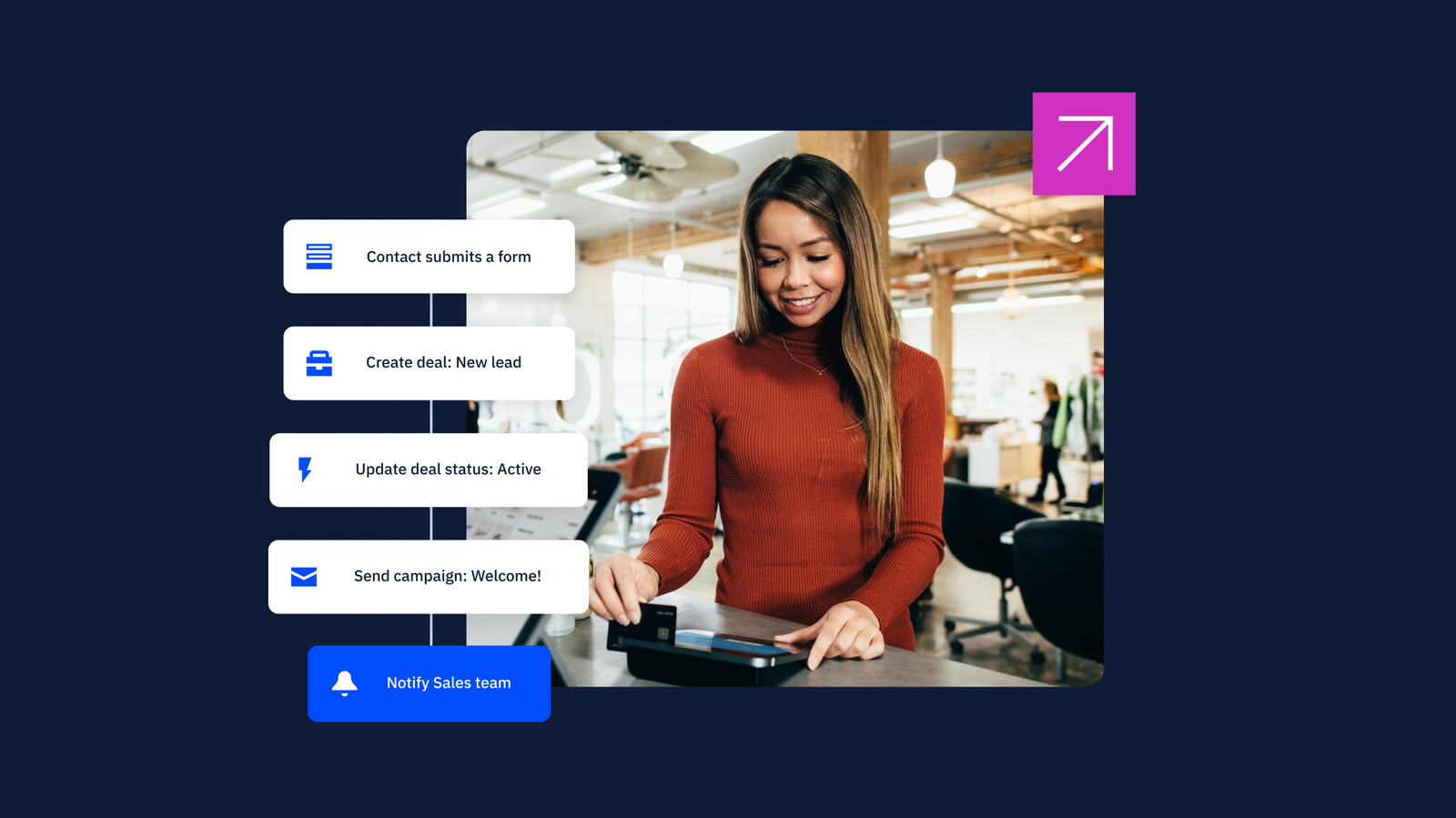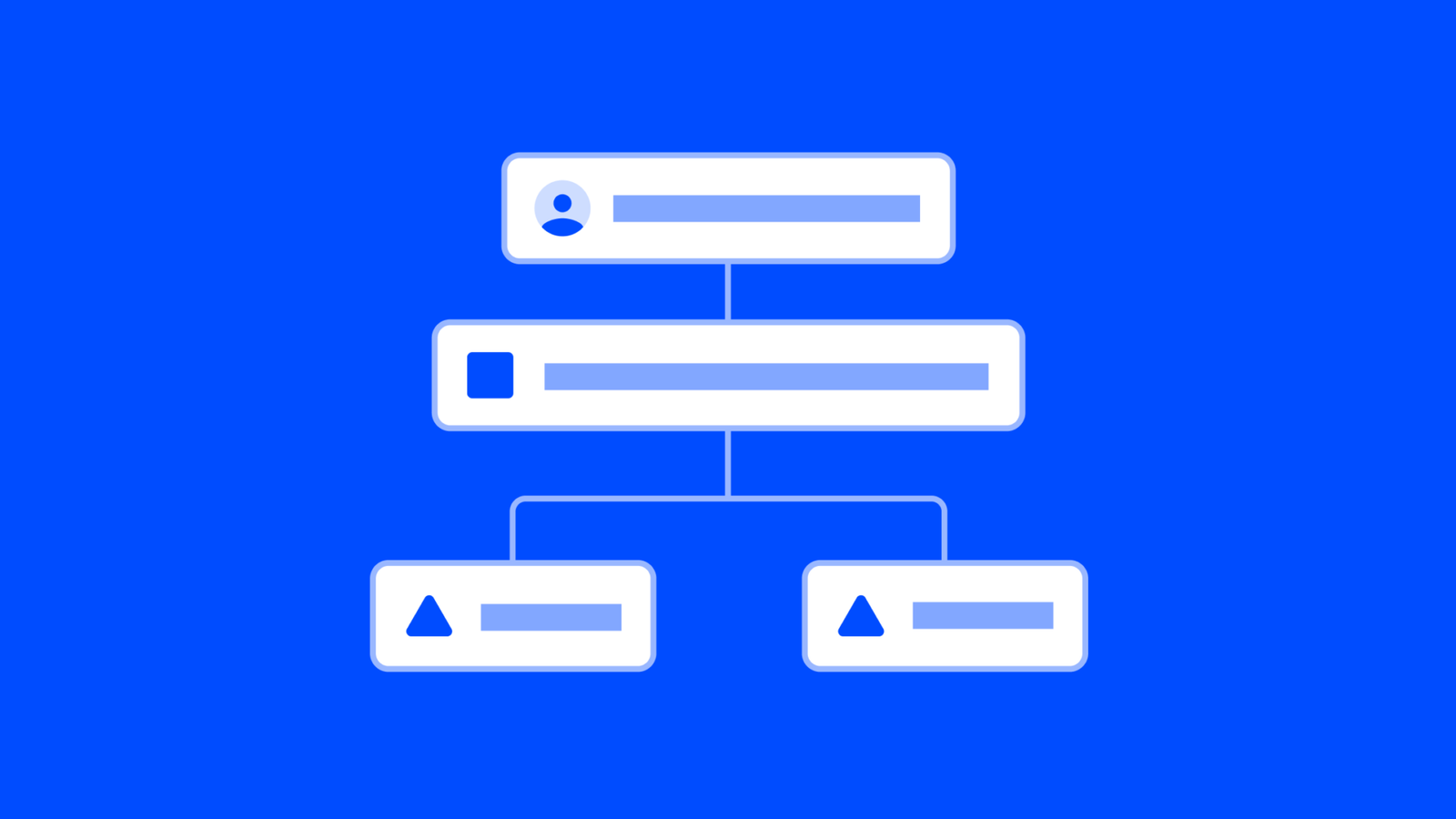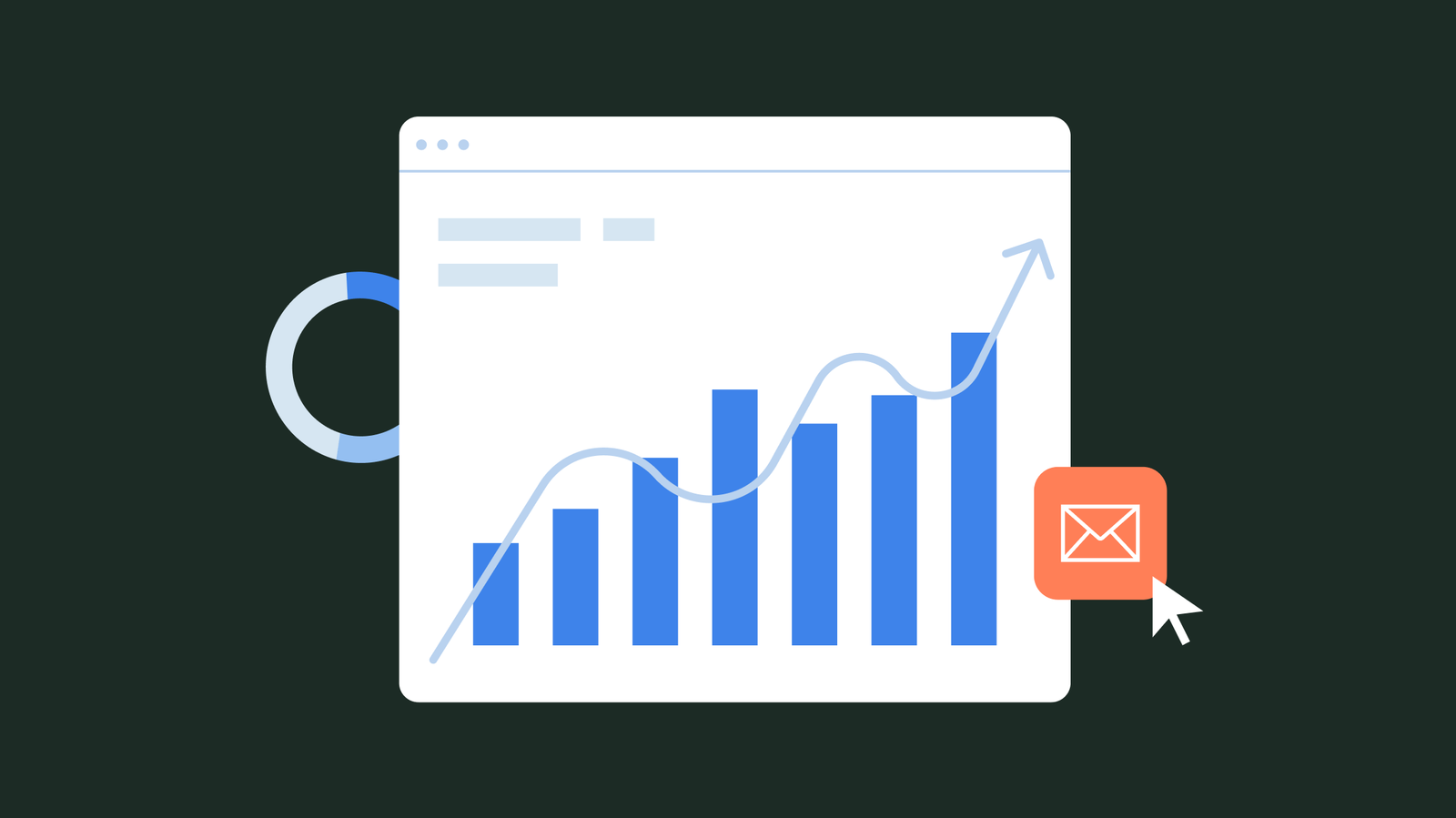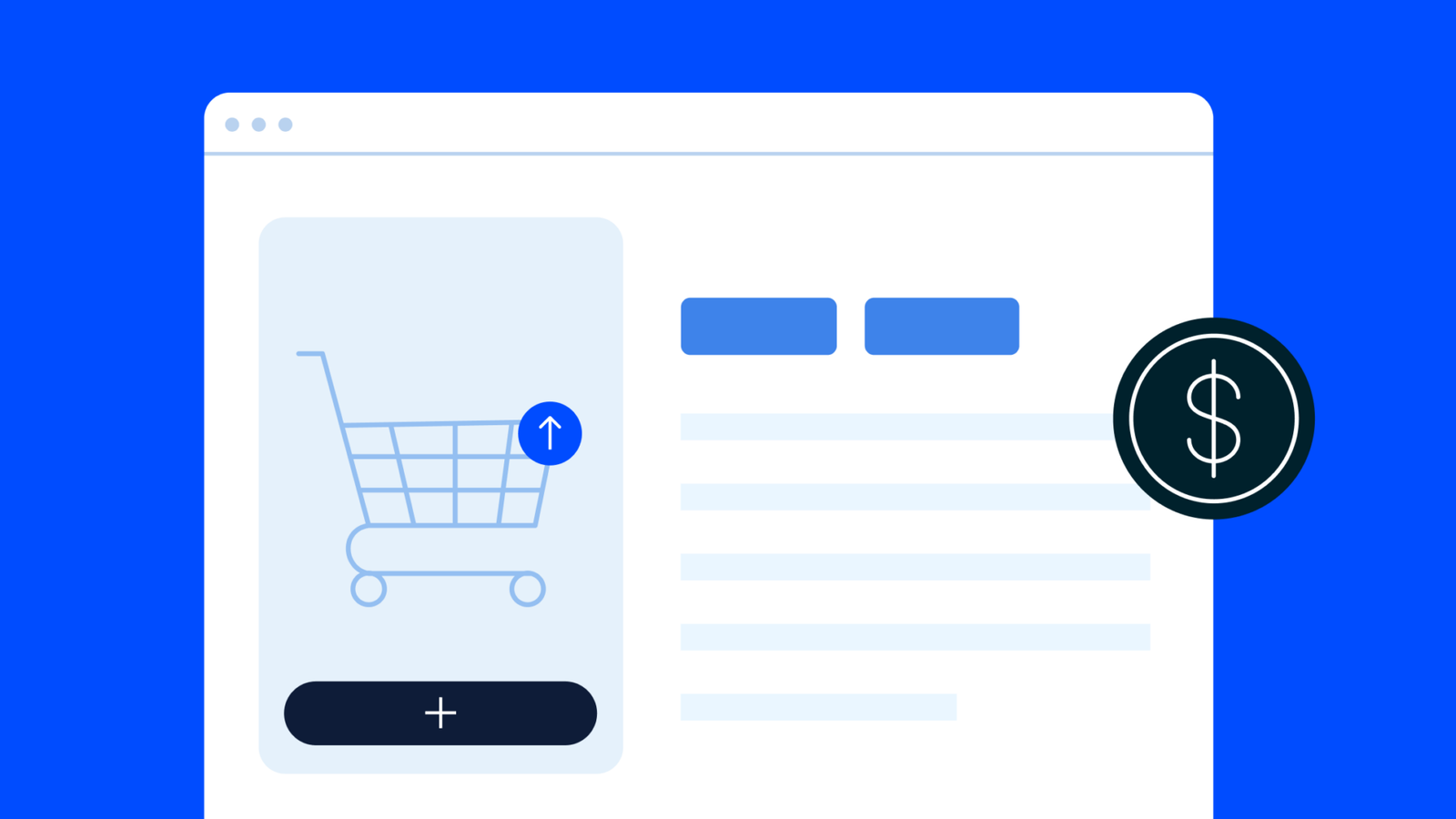Do you truly understand your audience? If you’re not collecting data and segmenting, chances are you’re missing out.
Our previous discussion on audience segmentation laid the groundwork for recognizing the diverse needs of your audience. For content creators, this understanding is pivotal—it's about creating content that not just reaches but resonates with each unique segment of your audience.
Building upon the concept of audience segmentation, we now turn to a strategy equally crucial in the content creator's toolkit: personalized content. This concept extends beyond generic audience engagement, diving into the realm of creating content experiences uniquely tailored to individual audience segments. It's a step deeper in the journey of connecting with your audience and making each piece feel as though it speaks directly to each viewer, reader, or follower.
Personalized content is about delivering experiences that are relevant, engaging, and valuable to your audience. Whether you are crafting a blog post, a video, or a social media campaign, personalization is key to elevating your content. It's the bridge between understanding your audience through segmentation and engaging them with content that feels custom-made for their interests, behaviors, and preferences.
Heads up: This post is part of our Content Creator series that delves into essential strategies that empower content creators – from those working independently to those creating content for large organizations and everyone in between. Discover all of the resources below.
In this post, we'll explore the tactics for personalizing content, emphasizing the role of tools like ActiveCampaign in this process. We'll also link back to our previous discussion on audience segmentation, weaving together a comprehensive approach for content creators to make every piece of content count.
What is personalized content?
Personalized content in digital marketing and content creation is all about crafting content tailored to the specific interests, behaviors, and preferences of different audience segments.
This approach goes beyond generic content to create unique experiences that resonate with each segment of your audience. The aim is to make the content more relevant and engaging, thereby increasing its effectiveness in capturing the audience's attention.
The significance of personalized content lies in its ability to enhance audience engagement. By presenting content that aligns with your audience's specific interests and needs, you significantly increase the chances of capturing their attention and eliciting a positive response. This tailored approach boosts engagement and fosters a deeper connection with the audience, as they feel understood and valued.
Platforms such as ActiveCampaign offer tools for personalizing content through automation and dynamic content features. This means you can automate the process of delivering tailored content to different segments, ensuring each group receives the most relevant content. Whether through email marketing, web content, or social media, automation tools can help streamline the personalization process, making it both efficient and effective.
Benefits of personalized content for content creators
In the journey of content creation, personalizing content for different customer segments is a pivotal step. It transcends the traditional one-size-fits-all approach, enabling content creators to forge stronger connections with their audience. This section explores how personalization can revolutionize the impact of your content, enhancing engagement, building customer loyalty, and driving better overall performance metrics.
Enhancing viewer engagement
Personalized content significantly increases viewer engagement. Content creators can captivate their audience more effectively by tailoring content to match the specific interests and preferences of different audience segments. This leads to increased interaction through likes, comments, or shares. Moreover, personalized content often feels more relevant to the audience, keeping them engaged for longer periods and reducing the likelihood of them tuning out.
Building loyalty and improving conversion rates
Personalized content facilitates the journey from casual viewer to loyal follower or customer. When content creators cater to the unique interests of their audience, they foster a stronger bond and sense of loyalty. This enhanced relationship boosts audience retention and leads to higher conversion rates. Personalized content subtly guides viewers through the conversion funnel, turning engagement into tangible results like sales or subscriptions.
Impact on key performance metrics
- Click-through rates (CTRs): Personalized content has a direct positive impact on CTRs. Tailored content is more likely to resonate with the audience, encouraging them to take the desired action.
- Audience retention: Keeping an audience interested over time is a challenge that personalized content effectively addresses. Content creators can maintain high audience retention rates by continuously delivering relevant content.
Personalized content for different types of creators
- Content marketers, copywriters, and bloggers: For these creators, personalized content might focus on metrics like time on page or content shares. Tailoring blog posts or articles to address specific audience interests can lead to increased engagement and longer time spent on their content.
- Streamers and YouTubers: These creators often look at metrics like audience size, followers, and video views. Personalized content might involve creating videos that cater to the specific interests or questions of their audience segments, leading to more subscribers and views.
- Social media influencers and podcasters: Influencers and podcasters might focus on personalized content to enhance interaction rates and subscriber insights. This could include creating posts or episodes that respond directly to audience feedback or trends within their community.
- Educational content creators: For those focusing on educational content, personalization might mean adapting teaching methods or content focus based on the learning preferences and skill levels of their audience segments.
In all these cases, the essence of personalized content is to deepen the connection with the audience, leading to better engagement, loyalty, and business outcomes. Content creators who master the art of personalization set themselves apart in a crowded digital space.
Understanding your audience for personalization
Gaining a thorough understanding of your audience is the cornerstone of personalizing your content effectively.

In this section, we'll explore the methods and tools that can help you delve into the preferences and behaviors of your audience. From analyzing data to harnessing feedback, each step plays a crucial role in shaping content that truly resonates. We'll also examine how platforms like ActiveCampaign can be instrumental in this process, providing the analytics and insights needed to inform your personalization strategies.
Gaining insights into audience preferences
The first step to personalizing content effectively is to deeply understand your audience’s preferences and behaviors. This involves more than surface-level observations; it requires delving into how your audience interacts with your content across various channels. For example, looking at how they respond to different types of social media posts, the kind of articles they read on your blog, or the videos they engage with can offer a wealth of information.
Analyzing these interactions requires a careful look at the data. This could involve reviewing which blog posts have the highest engagement, understanding the demographics of your social media followers, or noting which email campaigns have the highest open rates. It's a process of constant learning and adjustment, where each piece of data helps you refine your understanding of what your audience prefers and why.
Gleaning audience insights through analytics
Understanding your audience deeply is crucial for effective content personalization. Many digital marketing platforms, including tools like ActiveCampaign, offer robust analytics to dissect various aspects of audience interaction. These platforms typically provide insights into email interactions, responses to forms, and engagement on your site, helping to paint a comprehensive picture of your audience. For instance, analyzing which email subjects get the most opens or what content drives significant website engagement can be invaluable.
Features such as site tracking also play a critical role. They allow you to observe how your audience navigates your site, which pages hold their interest the longest, and their general browsing patterns. This level of detailed understanding is vital in tailoring your content to align with audience preferences and behaviors. Platforms that integrate these insights across multiple channels become powerful tools for developing a nuanced understanding of your audience.
Using data analytics
Effective use of data analytics transforms raw data into valuable insights. In personalizing content, this means looking at what content performs well and understanding why it does. It involves delving into analytics to draw correlations between audience characteristics and their content preferences.
Data analytics tools can help you identify patterns in audience behavior, such as the most popular types of content among different age groups or geographic locations. This information is key in tailoring your content to meet these specific preferences. It's about moving beyond generalizations to a more targeted approach that considers the subtle nuances of your audience’s interactions with your content.
Leveraging audience feedback
Finally, directly incorporating customer feedback into your content personalization strategy is crucial. Actively seeking out and listening to audience opinions, criticisms, and suggestions can provide direct insights into their preferences and expectations, as well as increase customer satisfaction.
Whether through comments, direct messages, or surveys, every piece of feedback is an opportunity to refine your understanding of your audience further. It’s a way to ensure that your personalization efforts align with what your audience wants and needs. This ongoing dialogue is not just about gathering data; it’s about building a relationship with your audience, where their input directly shapes the content they receive.
By harnessing the capabilities of tools like ActiveCampaign and combining them with smart data analytics and active audience engagement, content creators can develop a deep and dynamic understanding of their audience. This understanding is the foundation for creating truly personalized content that resonates and engages.
Strategies for personalizing content
Personalization is the key to establishing a deeper connection with your audience. This section explores various strategies to tailor your content based on the rich insights gained from audience data. From the choice of topics to the style of delivery, every aspect of your content can be customized to resonate more closely with different audience segments. We’ll delve into effective methods to use this data and transform your content strategy, ensuring every piece of content you create is as engaging and relevant as possible.
Tailoring content based on audience data
Effectively using audience data is essential for personalizing content. You gain valuable insights into your audience's interests by examining interactions such as website visits, email engagements, and social media activity.
- Topic selection: Determining which topics generate the most engagement can guide your content creation. If ‘how-to’ articles are popular, focus on more instructional content that caters to this interest.
- Adapting tone and style: Different audience segments may respond better to different tones and styles. Customize your content’s tone to suit each segment's preferences, whether a more formal approach for professional audiences or a casual, conversational style for younger demographics.
Additional strategies for personalization
Expanding beyond basic topic selection and tone adaptation, consider these additional personalization strategies:
- Contextual personalization: Adapt your content based on the context of your audience's interactions. For instance, aligning content with current trends or events relevant to your audience.
- User journey personalization: Create content corresponding to different stages of the user journey, from awareness to decision-making. This might be a blog post or even a personalized product recommendation.
- Dynamic content customization: Employ tools to alter content based on the user’s past behavior dynamically.
- Interactive content: Engage your audience with interactive content like quizzes or polls, tailoring subsequent content based on their responses.
- Feedback-based personalization: Use direct audience feedback to tailor future content, making your strategy more responsive and audience-centric.
Combining these strategies creates a comprehensive approach to personalizing content. It’s about crafting customer experiences that resonate with each segment, enhancing the relevance and impact of your content across your diverse audience.
Callback to segmentation
Effective personalization is a direct extension of precise audience segmentation. If you haven't already, I highly suggest you check out our previous post, The Power of Audience Segmentation for Content Creators.
Here are a few key points:
- Creating segment-specific content: Once you have identified different segments within your audience, craft content that caters to each group's unique interests and needs.
- Consistency with segmentation strategy: Ensure that your personalization efforts are consistent with your segmentation strategy. The more aligned these two are, the more effective your content will be.
Incorporating these strategies into your content creation process ensures that each piece of content you produce is engaging and highly relevant to the target audience. Remember, the ultimate goal is to create content that resonates on a personal level with different segments of your audience, enhancing engagement and fostering a deeper connection.
Leveraging ActiveCampaign for dynamic content and automation
In the digital age, where content is king, the crown jewel is undoubtedly personalization. This section delves into how ActiveCampaign can be your ally in crafting content that reaches and truly engages your audience.
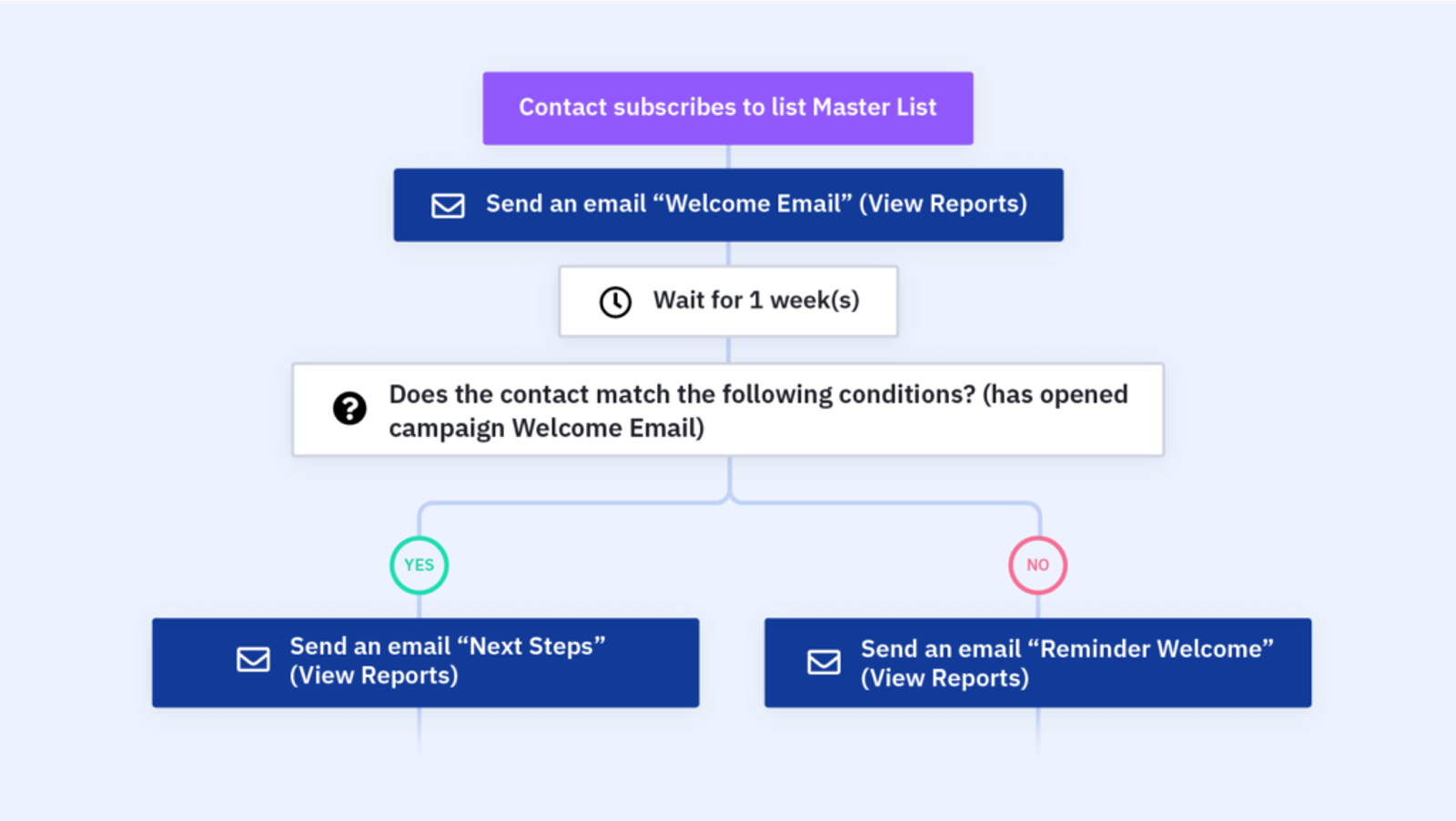
We'll look at the tools and features that make ActiveCampaign a powerhouse for creating dynamic, automated, and personalized content experiences. We’ll also provide practical tips to help you make the most of these capabilities for your content strategy.
ActiveCampaign’s dynamic content creation
ActiveCampaign stands out for its dynamic content creation capabilities, offering content creators the power to craft personalized experiences for their audience segments.
With ActiveCampaign, you can:
- Automate personalization: Set up automations that trigger personalized content based on user behavior, ensuring that each audience segment sees content tailored specifically to them.
- Create rich email experiences: Use dynamic content in emails to include specific messages, offers, or calls-to-action that resonate with each segment, enhancing relevance and click-through rates.
- Adapt in real-time: ActiveCampaign's dynamic content responds to real-time data, meaning content can evolve based on the latest interactions, ensuring maximum relevance.
Tips for segmenting audiences with ActiveCampaign
Segmentation is crucial for delivering personalized content, and ActiveCampaign simplifies this process:
- Data-driven segmentation: Use the wealth of data from user interactions to create segments that truly reflect your audience’s preferences and behaviors.
- Visual automation builder: ActiveCampaign’s visual builder lets you easily create automation workflows corresponding to different audience segments.
- Tagging and scoring systems: Implement tagging for nuanced segmentation and scoring to prioritize leads based on their engagement and likelihood to convert.
Personalizing websites with ActiveCampaign
Personalizing your website is pivotal for converting visitors into subscribers or potential customers:
- Pop-up modals: Integrate ActiveCampaign forms on your website to use pop-up modals or floating bars that capture attention with timely offers or content.
- Tailored on-page messages: Customize on-page messages or offers based on a visitor’s past interactions with your site, such as viewing history or past purchases.
- Predictive content delivery: Leverage ActiveCampaign’s machine learning to predict which content a user is most likely to engage with and prominently display that content.
Each feature in ActiveCampaign empowers you to create a more tailored and interactive experience for your audience, leading to higher engagement and conversion rates. By leveraging these tools effectively, you can ensure that your content reaches your audience and strikes a chord with them.
Best practices in content personalization
In the art of content creation, personalization is akin to a master chef seasoning a dish to perfection—it should be just right. Too little and it's bland, too much and it's overwhelming. In this section, we delve into the best practices that ensure your personalized content is flavorful without being overpowering. We’ll also learn how to maintain the delicate balance between personal touch and privacy that respects your audience's tastes.
Let's explore how to finesse this balance and serve content that satisfies the diverse palates of your audience segments.
Avoid over-personalization and outdated data
Personalizing content is a delicate endeavor. While it has the power to significantly enhance the audience's user experience, there's a fine line between personalization that resonates and that which feels invasive. Maintaining this balance is essential and best achieved by ensuring the data driving your personalization efforts is accurate and timely.
Data hygiene
Firstly, it is crucial to invest time in maintaining data hygiene. This involves routinely cleaning your data sets to remove inaccuracies, duplicates, and outdated information. Organize your data effectively by categorizing it in a way that aligns with your segmentation and personalization strategies.
Tools and processes such as data cleansing software or employing a routine data maintenance schedule can help ensure that your database is an asset, not a liability. Regular data audits refine your database and reveal opportunities for deeper audience engagement through fresh insights.
Relevance is key
Data relevance goes hand-in-hand with data hygiene. It’s not enough for data to be clean—it must also be pertinent to your content objectives. Delve into the metrics aligning with your campaign goals, and use data correlating with your key performance indicators.
Avoid the trap of relying on broad or unrelated data points that could lead your personalization astray. Discuss how to apply a targeted approach, utilizing analytics to pinpoint the most effective data for content personalization and illustrating how this focus can significantly improve audience response.
Test and learn
Finally, personalization should be treated as an ongoing experiment. Engage in constant testing and optimization, such as A/B testing different personalization tactics and meticulously analyzing the outcomes. Provide actionable insights into establishing control groups, measuring the uplift of personalized content, and iteratively refining your strategy.
Stress the importance of agility in content personalization—how real-time adjustments and responsiveness to analytics can drive improved engagement.
Balancing personalization and privacy
Navigating the intricacies of personalization and privacy is a growing concern in content creation. This dynamic requires a deft touch, ensuring that while offering a personalized customer experience, you safeguard user privacy.
Transparent data collection
The transparency of your data collection process is paramount. It's about open communication with your audience regarding the what, why, and how of the data you gather. Delving into the rationale behind data collection helps to demystify the process for your audience and underscores the value that such data adds to their content experience.
Crafting a clear and accessible privacy policy reinforces trust and underscores your commitment to transparency. Discuss the importance of privacy statements and opt-in forms that clarify the purpose of data collection.
Respecting audience boundaries
Understanding and respecting your audience's privacy boundaries is a legal obligation and a cornerstone of audience trust. Detail how content creators can navigate these boundaries, using personalization to add value without infringing on personal space. This can include practical steps like implementing user controls for personalization and data-sharing preferences.
Data protection compliance
Staying abreast of and compliant with data protection regulations such as GDPR and CCPA is no longer optional. It's a must. Elaborate on how these regulations impact content personalization, offering actionable advice on how to remain compliant while still delivering personalized content. Emphasize the need for ongoing education about these regulations as they evolve and the implications of non-compliance.
Mitigating the 'creep factor'
Personalization, when overdone, can trigger the 'creep factor,' turning a well-intended message into a breach of user comfort. Explore strategies to avoid over-personalization, such as setting limits on data usage, allowing users to set their personalization preferences, and using feedback loops to ensure personalization is well-received. Explain how these strategies help maintain the delicate balance between beneficial personalization and respect for personal boundaries.
The future of personalized content in content creation
Rise of AI in strategy and research
Artificial Intelligence (AI) is rapidly becoming an indispensable tool in the earliest stages of content strategy and research. No longer confined to the realms of content creation and delivery, AI's role in the strategic planning phase is crucial for a more refined approach to content personalization.
- Transformation of persona research: AI technologies can transform traditional persona research into dynamic, interactive simulations. This evolution in persona analysis allows for a more nuanced and multi-dimensional understanding of target audiences.
- Supporting omnichannel strategies: Integrating AI in content planning aids in developing sophisticated omnichannel strategies. It helps content creators orchestrate a consistent and personalized experience across various platforms and touchpoints.
- Accelerating content planning: AI makes content planning more efficient. It leverages existing infrastructure investments, enabling content creators to quickly adapt to changing market trends and audience preferences.
Predictive analytics and personalization
Predictive analytics, empowered by AI, is set to redefine how businesses understand and engage with their customers.
- Understanding customer behavior: AI-driven predictive analytics provides deep insights into customer behaviors and preferences. This technology helps identify patterns and trends crucial for crafting targeted marketing strategies. Using predictive analytics will help deliver the right content to the right people at the right time, whether a well-timed blog post or product recommendations.
- Tailoring campaigns to customer habits: AI enables businesses to tailor their marketing campaigns more effectively by anticipating what customers are likely to do next. This includes adapting strategies to align with unique customer spending habits and engagement patterns.
- Enhancing campaign relevance: Predictive analytics ensure that marketing campaigns are not only well-timed but also highly relevant to each segment of the audience. This relevance is key to increasing engagement and conversion rates.
AI is reshaping the landscape of content personalization, offering unprecedented capabilities for strategic planning and customer engagement. The rise of AI in strategy and research, coupled with the power of predictive analytics, signifies a new era in content creation—one that is more data-driven, efficient, and personalized.
Sustainability and social responsibility in marketing
Content marketing is seeing a significant shift toward sustainability and social responsibility. This shift aligns with the growing consumer awareness of the impact of their purchases on the environment and society.
- Integration of values in marketing: As consumers become more conscious of ecological and social issues, content creators are now integrating these values into their marketing strategies. This approach resonates with a segment of the audience that prioritizes ethical consumption.
- Building connections with conscious consumers: By reflecting environmental and social responsibility in content, businesses can forge stronger connections with consumers who value these principles. This trend is about aligning brand values with consumer expectations and contributing positively to broader societal goals.
- Case studies and examples: Discussing real-world examples of brands that have successfully integrated sustainability and social responsibility into their marketing can provide practical insights and inspiration.
Personalization ethics
Maintaining ethical standards is crucial in a world where personalization is increasingly data-driven.
- The importance of data privacy: With personalization heavily reliant on user data, upholding data privacy becomes a cornerstone of ethical marketing. It's about balancing personalized content with the responsibility of handling consumer data sensitively.
- Consumer trust: The ethical use of data is directly tied to consumer trust. Maintaining transparency in collecting, using, and storing data is crucial in building and retaining this trust.
- Navigating the ethical landscape: Offer guidance on navigating the complexities of ethical personalization. This includes adhering to data protection laws, respecting user preferences, and avoiding practices that could be perceived as manipulative or invasive.
Integrating these values into content strategies can appeal to environmentally and socially conscious consumers and address the critical role of ethics in personalization, particularly in data privacy and consumer trust.
Virtual reality (VR) and augmented reality (AR)
Incorporating VR and AR in marketing heralds a new era of immersive and interactive customer experiences. These technologies are not just about novelty; they are becoming vital tools for engagement.

- Immersive experiences: VR and AR allow brands to create deeply immersive experiences, taking storytelling and customer engagement to new levels. This immersion can lead to a stronger emotional connection with the brand.
- Interactive marketing: These technologies enable interactive marketing, where consumers can engage with products or services virtually, enhancing the decision-making process.
- Personalized virtual experiences: Imagine a VR/AR experience tailored to individual preferences. This level of personalization could transform how brands interact with their audiences, making experiences more engaging and memorable.
Integration of advanced tools
Integrating technologies like data analytics tools, CRM systems, and content management platforms is revolutionizing personalized content creation.
- Enhanced audience understanding: By leveraging these tools, content creators can gain a deeper understanding of their audience, leading to more targeted and relevant content strategies.
- Seamless content customization: The integration of these technologies facilitates smoother content customization, ensuring that content creators can tailor their messages to the needs and preferences of different audience segments with ease.
- Efficiency and effectiveness: These advanced tools streamline the content creation process and enhance the effectiveness of marketing strategies, making personalization more efficient and impactful.
The rise of VR/AR technologies and the integration of advanced analytical tools are shaping the future of personalized content creation. These technologies promise to bring a new dimension to content marketing, offering audiences more engaging, interactive, and personalized experiences.
Getting the most out of personalized content
Personalization in content creation is not just a trend; it's an evolution in how we connect with our audience, making each interaction more relevant and impactful.
As content creators, we encourage you to embrace the journey of personalization. Experiment with the strategies discussed, from AI-driven insights to ethical personalization and advanced technologies like VR/AR. The possibilities are limitless, and the benefits—enhanced engagement, deeper loyalty, and improved conversion rates—are within reach.
For those looking to dive deeper and harness the full potential of personalization tools, ActiveCampaign offers a suite of features designed to elevate your content strategy. From detailed audience segmentation to dynamic content creation, ActiveCampaign can be your partner in crafting truly personalized content experiences.
Explore how ActiveCampaign can transform your approach to content personalization with a free trial, no credit card required.



